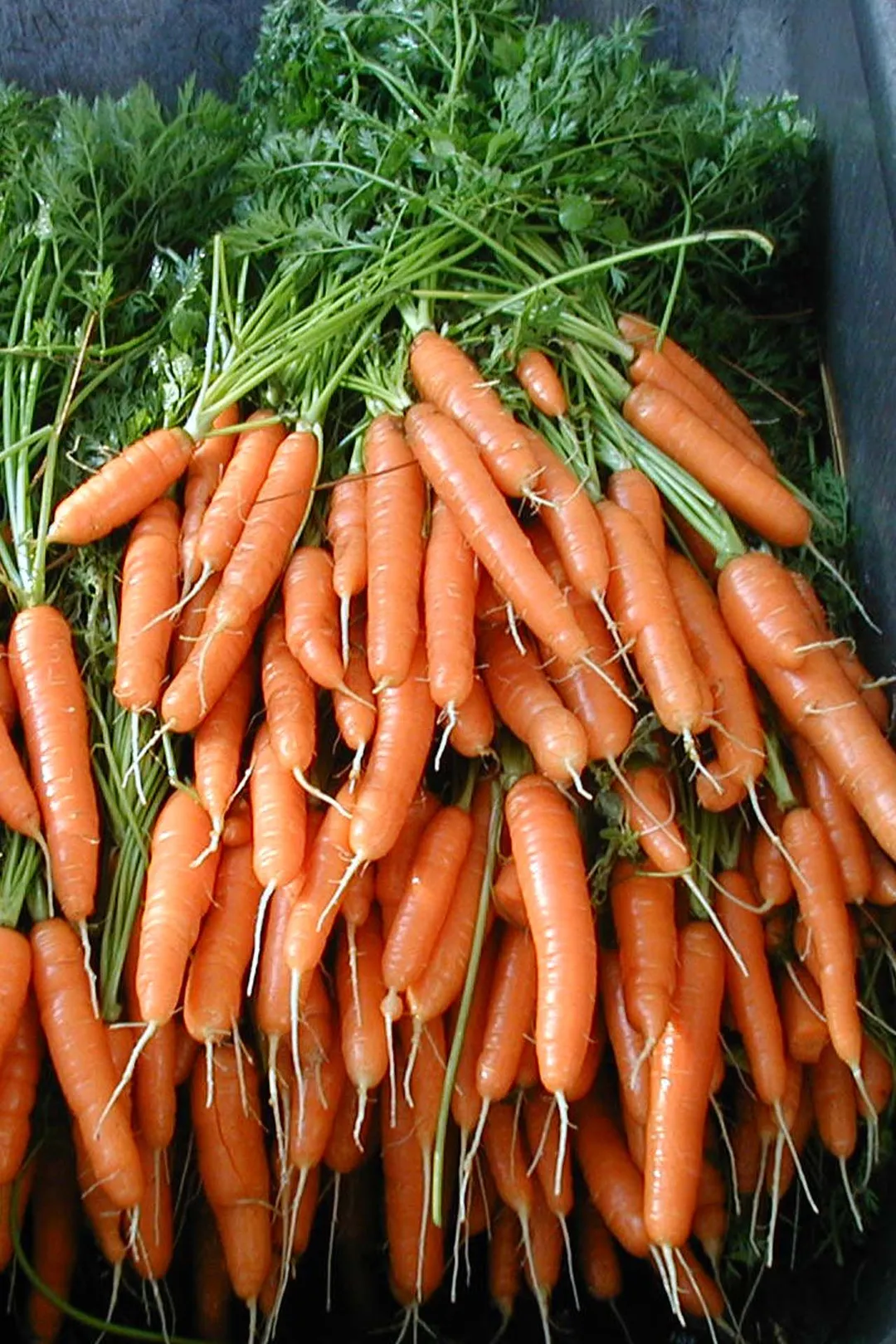Though everyone is familiar with this root vegetable, not everyone knows how to store carrots properly. Although carrots are an incredibly resilient vegetable, they do have their limits. If not stored right, they can wilt and begin to go bad in only 2 or 3 days.
Here are a couple of tricks that you can use to extend the shelf-life of your carrots.
Carrots and Storage Temperature
Carrots are actually far more sensitive to temperature than you may think. The temperature that you store them at won’t just determine their shelf-life, but taste and texture, too.
Sugar (fructose and glucose) accounts for 53% of an average carrot’s composition. A good portion of the rest is starch. Both of these substances have a bearing on the quality of the carrot.
If the carrot has higher sugar than it does starch, it’s sweeter but less firm. Conversely, if it’s higher in starch, the carrot may taste slightly bitter, but be physically firmer.

It’s not just a coincidence that whenever the level of one rises, the other drops. The two substances are intimately linked to one another. It is how the carrot stores and releases energy to keep itself alive and fresh.
Starch is a major component of the cell wall. This is why high-starch carrots are firmer. But when the carrot is in dire need of energy (fighting against cold temperatures, for example), the starch can be converted into energy-dense sugar. It does this by releasing an enzyme called amylase.
The enzyme will be produced by the carrot at a low storage temperature (35.6°F). You will notice refrigerated carrots taste sweeter and are less firm than their fresh counterparts.
However, the same result (sweetened taste, less firm texture) also occurs when the carrot is stored at room temperature (66.2°F). At this temperature, the carrot will also convert starch into sugar, but the process doesn’t involve amylase at all.
Unlike with potatoes, cold induced sweetening in carrots is not a bad thing. In fact, some people prefer the taste. So, don’t worry if your carrots end up tasting sweeter than normal.
The Best Way to Store
Storing in the fridge is the best way to preserve your carrots. The cold temperature will lengthen the carrots’ lifespan significantly. Just put your carrots into a plastic bag, then into the fridge’s main compartment.
The main advantage of the fridge method is that it is very versatile. You can store raw carrots, peeled carrots, and even cut carrots in this manner.
Plus, your carrots will last for up to a month in the fridge. However, you should make an effort to use them within 3 weeks. Their quality tends to go downhill very quickly during the fourth week.

To avoid the carrots drying out and turning mushy, you can store them in water. This method will only work for raw, unpeeled carrots. Submerged in a water-filled container, the carrots will be continuously hydrated.
Your carrots will remain crunchy for about 2 weeks. After that, though, the carrots can turn slimy.
How to Store Carrots for the Long Term
For the long term, you will have to enlist the help of your freezer. Carrots are among the list of veggies that freeze very well.
Frozen carrots can easily last for an entire year. However, if you store them at a constant temperature of 0°F, they will remain safe to consume indefinitely.
How to Store Carrots: The Detailed Guide
1. In the Fridge
Before putting the carrots into the fridge, you should cut out the leafy greens at the crown. They will draw moisture away from the roots, causing your carrots to dry out.
Additionally, it’s not recommended to wash the carrots prior to storage. Wet carrots are generally more susceptible to mold. You should only wash them right before consumption.
- In Plastic Bags
This is the most popular way to store carrots since it’s so simple and quick. The humidity level in a fridge is often very low,, which causes the carrots to dry out. The plastic bag can control the humidity level by trapping moisture, effectively keeping the carrots fresh for longer.
As mentioned earlier, this method will work for raw, peeled, or cut carrots alike.
Take out a resealable plastic bag and put your carrots inside.
Before sealing the bag, squeeze and push out as much air as possible. Air can speed up the degradation of the carrots.
Put the bag of carrots in the coolest part of your fridge’s main compartment. Because cold air sinks, the best place is usually at the bottom shelves.
- In a Water Bowl
Find a large bowl that can fit your carrots. There should be at least an inch of space between the top of the carrots and the rim of the bowl.

Fill the bowl with filtered water, then cover up the bowl with plastic wrap.
Store the bowl in the fridge. Make sure to change the water once a day.
While this method can hydrate your carrots far better than the plastic bag method, it’s not the most practical. A bowl of carrots takes up a lot of precious space in the fridge. Additionally, if you have a lot of carrots that you need to store, there definitely won’t be enough space.
Last but not least, the storage time isn’t as good as with the plastic bag technique. Carrots stored this way will only last around 2 weeks.
2. From the Garden
If you harvest your own carrots from the garden, we highly recommend that you eat them raw. They taste excellent when freshly harvested.
But if you have other plans for the carrots, you can use one of the two methods suggested above.
Conclusion
Overall, learning how to store carrots is quite easy. They are a very durable root and can withstand the environment pretty well. As long as you have the proper techniques, they won’t give you too much trouble.
Tuyet Pham
Head Chef, Culinary ConsultantLuna Regina
Writer, Author

